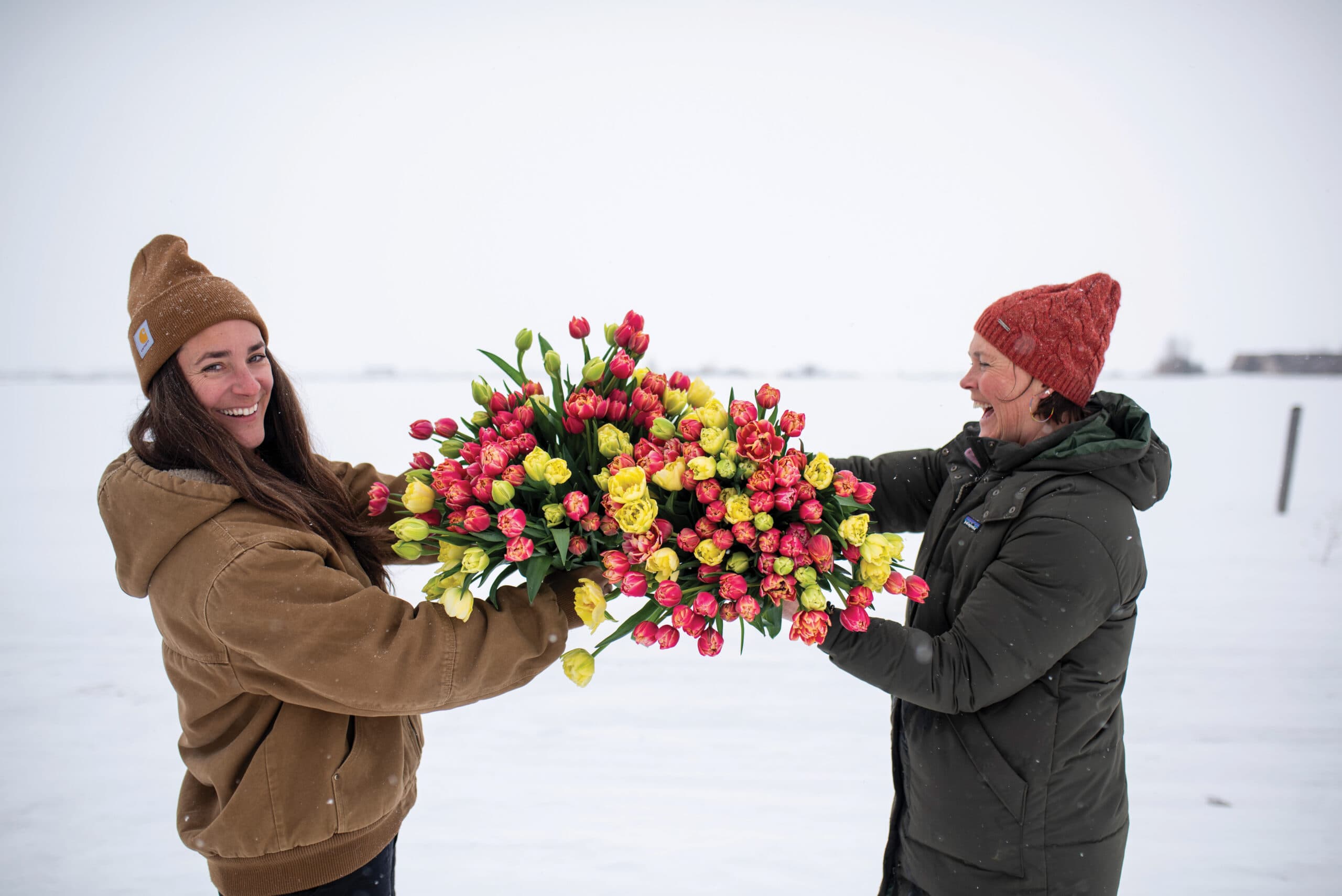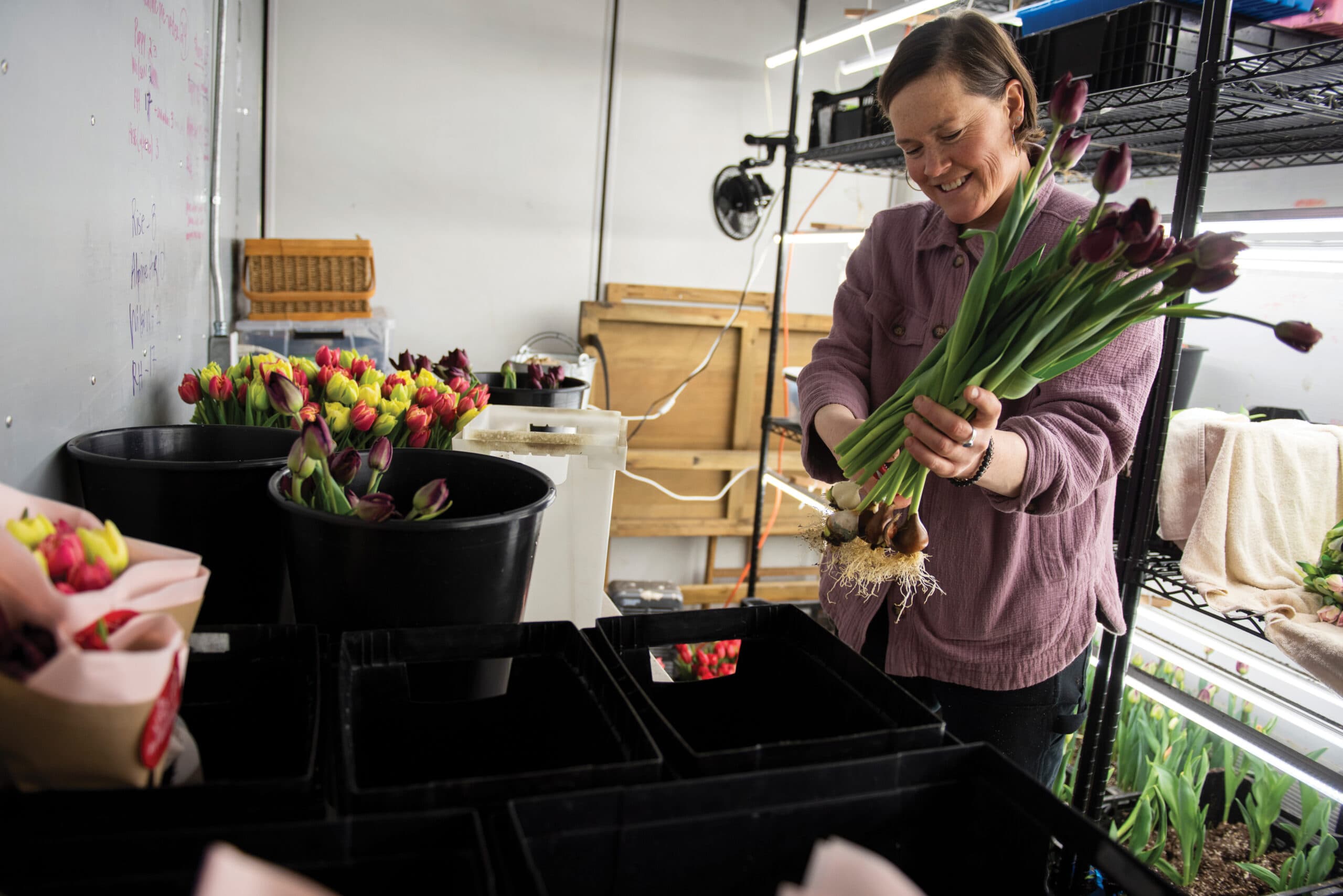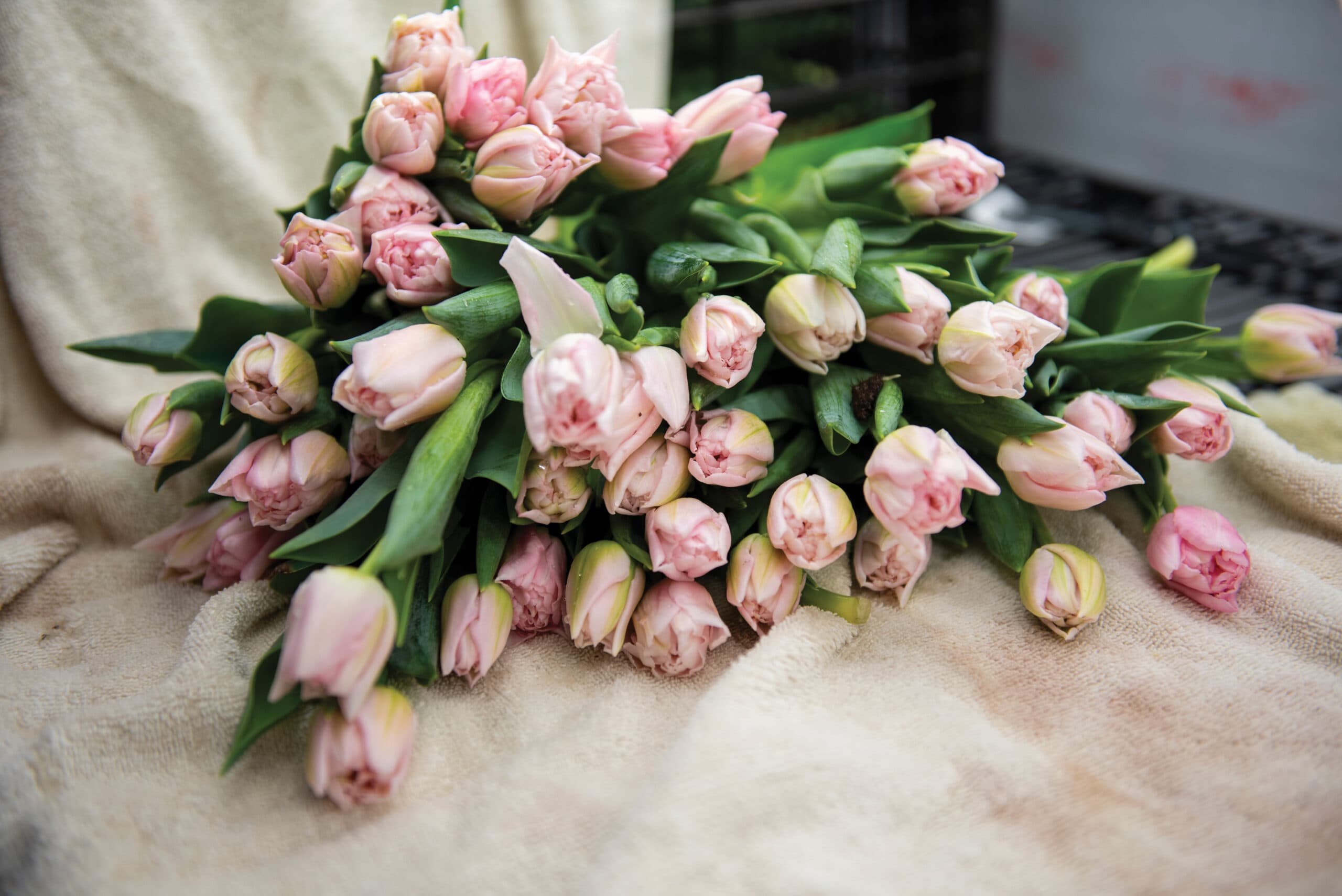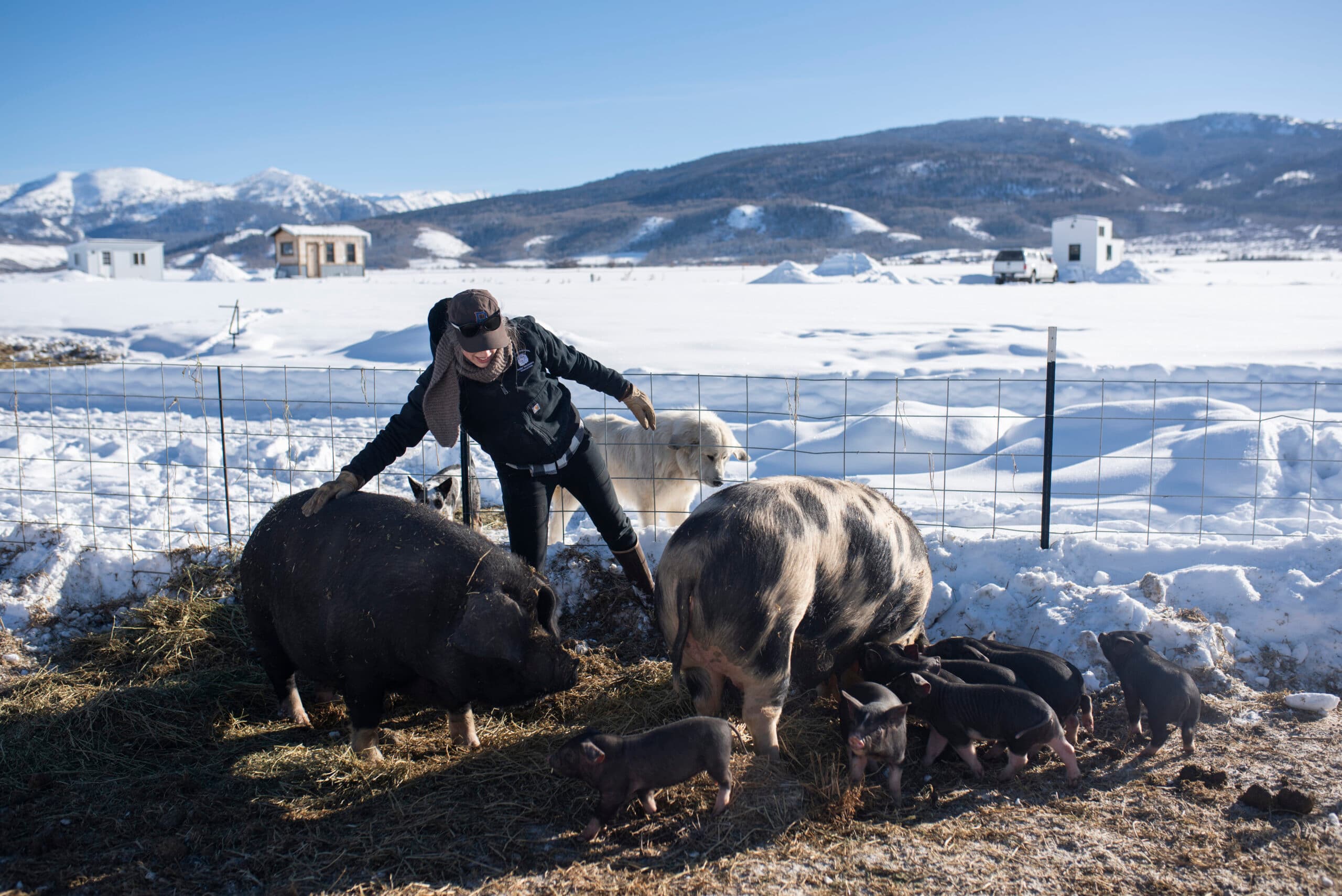Winter Blooms

Last year on Valentine’s Day, I lovingly gave my husband these instructions: Go to Rise Coffee House in Driggs. Get there early. Come home immediately.
The goal of this errand for love was singular and specific: to snag a bouquet of fresh, limited-edition tulips from Red House Flowers, delivered early that morning, before they sold out. While chocolate is always yummy, and a greeting card is nice, that year I coveted the red blooms, made all the more luscious by several feet of snow on the ground outside. And, all the more remarkable, they were grown just down the highway in Victor.
Wait, what? Locally grown flowers in mid-winter? The Teton Valley iteration of this phenomenal feat is the brainchild of Emily Sustick and Katie Knipe, partners since 2019 at Red House Flowers. Based in Victor, Emily and Katie grow cut-flowers, design arrangements and bouquets utilizing exclusively local blooms, and teach workshops on flower arranging and wreath-making. They also offer spring and summer flower shares, which are a weekly subscription of in-season blooms.
While growing almost anything is a precarious endeavor in Teton Valley, the two women have expanded their gardens and flower varieties gradually. In 2021, Red House offered their first spring flower share.
“I fell in love with tulips,” Emily says. “Discovering the diversity of tulips that don’t even actually look like tulips was what hooked me.”
Then, the share was just greenhouse-grown tulips. That fall, to improve both volume and success of their new-found tulip romance, the partners attended a workshop detailing methods for growing them indoors.
While producing more stems earlier certainly increases their business’s viability, Emily and Katie have another, loftier goal: contributing to sustainable flower production worldwide. As Emily explains, Valentine’s Day is the biggest flower holiday of the year. Roses, especially red ones, are the most desired bouquet, and they’re an international business. Flowers are brought into the United States from Ecuador and Colombia on up to twenty temperature-controlled flights per day for the three weeks leading up to February 14, totaling a billion stems. “The environmental cost of flowers is often overlooked, and that is a big motivation for growing flowers locally,” Katie says.




The Red House journey to local Valentine’s Day blooms continued with the knowledge Emily and Katie gained from Emily von Trapp and Linda D’Arco’s program, “The Tulip Workshop.” Tulips are grown from bulbs, a compact package of nutrients designed by nature to feed the plant and put forth the spring blossom. To get cut tulips any earlier than an outside, soil-grown bulb would yield, growers must “force” or coax the bulb to bloom.
“When forcing a bulb, we’re thinking about providing conditions it would need in nature,” Emily says.
In 2022, Red House offered their second spring tulip share in March and April, this time with blooms grown hydroponically under LED lights. Knowing they were onto something, they pushed the bloom schedule even earlier the next year to offer their first Valentine’s bouquets at valley coffee shops. In 2024 they added a Valentine’s bouquet preorder option to their online store. By fall 2024, Emily and Katie felt ready to commit to a larger scale of forced tulip cultivation. Armed with new experience, they placed an order for 10,000 tulip bulbs.
When bulbs arrive in October, they’re planted immediately in soil in crates. Because tulips need a chilling period (as would happen outdoors in winter), they start their life in cold storage, where they experience “winter.” About a month before bloom, Emily and Katie bring the planted bulbs into the growing area, where they are treated to “spring” under timed, temperature-controlled LED lights. This is the final step to bringing forth those gorgeous blooms.
Varieties far surpass what you might picture when you think of a traditional tulip: double tulips with indigo and violet; fringe tulips with eye-catching edging; and even parrot tulips that are a kaleidoscope of vibrant patterns.
“My favorites are the peony-style and French tulips,” Emily says. “These are called doubles because of their multiple layers of petals.”
Brought out one variety at a time, each features its own type of artistry, unveiled week after week.
Fast-forward to February 2025, and those red tulips are ready to be cut for Valentine’s bouquets. Red House has also added two winter tulip shares before Mother’s Day, featuring stunning colors and blooms with fringed and frilly petals, as well as classic tulips. Looking forward, Emily and Katie are experimenting with forcing other bulbs, including lilies, early daffodils, and grape hyacinth.
The partners articulate a greater vision: encouraging awareness of the diversity of flowers in the natural world.
“What you see in the grocery store is only a small part of what’s out there,” Katie says.
No matter what they grow next, the pair will continue to play, learn, and experiment. “We have to love what we’re doing,” Emily says.
Always conscious of their environmental footprint, Emily notes that Red House composts spent tulip bulbs with foliage and discarded soil. Their growing space is so tight and well-insulated that heating requirements are minimal, and when tulips are done, the space doubles as both cold storage for summer flowers and as a studio for Katie’s designs.
This Valentine’s Day, I’m conflicted. Should I go for the husband-delivered bouquet again? Maybe give the web pre-order a try? Or indulge in a winter tulip share? Thanks to Red House Flowers, I have many local choices, all of which are a treat to behold—particularly while the snow continues to pile high.









